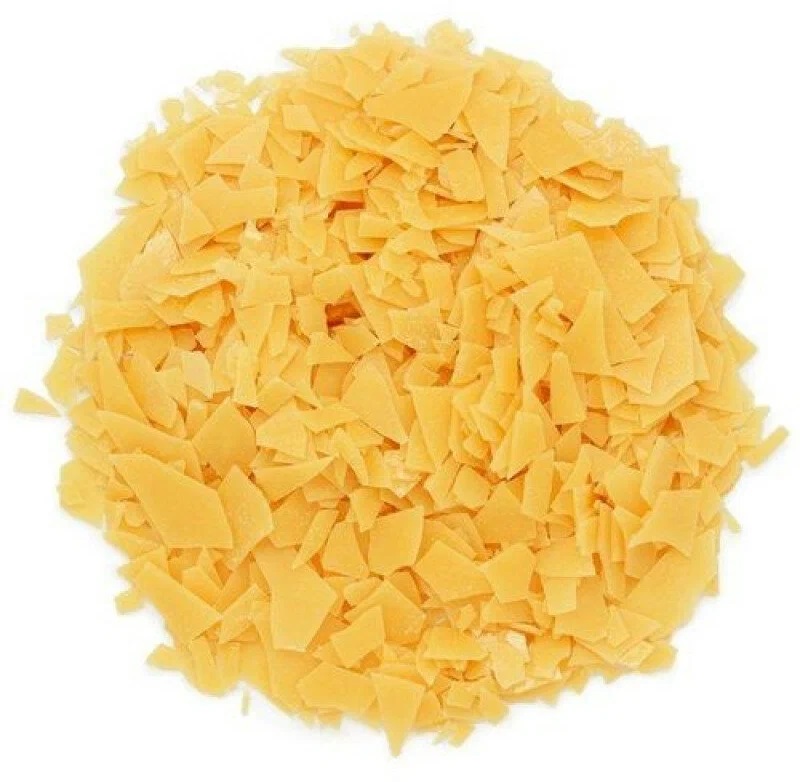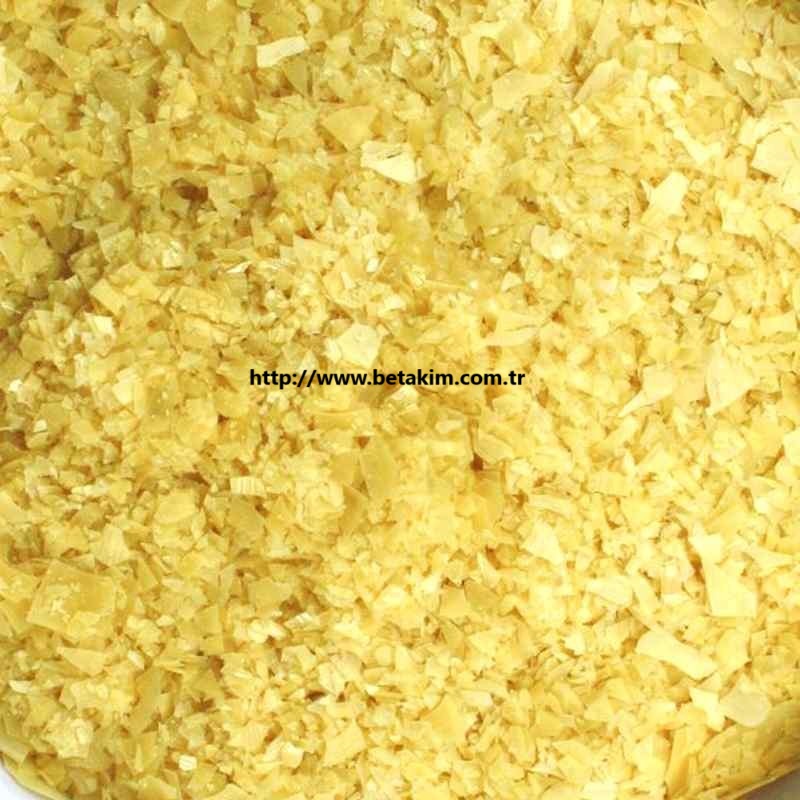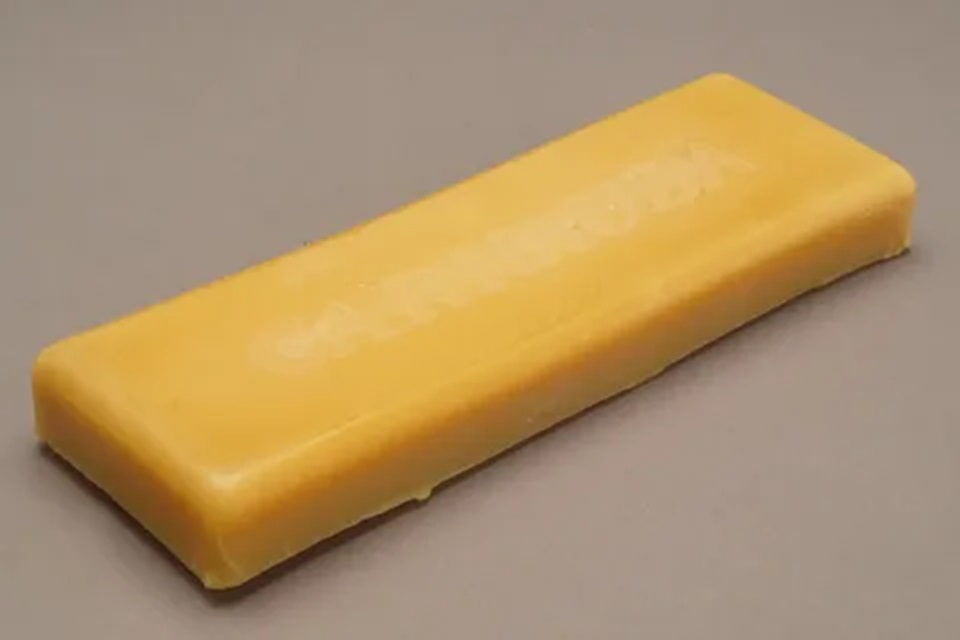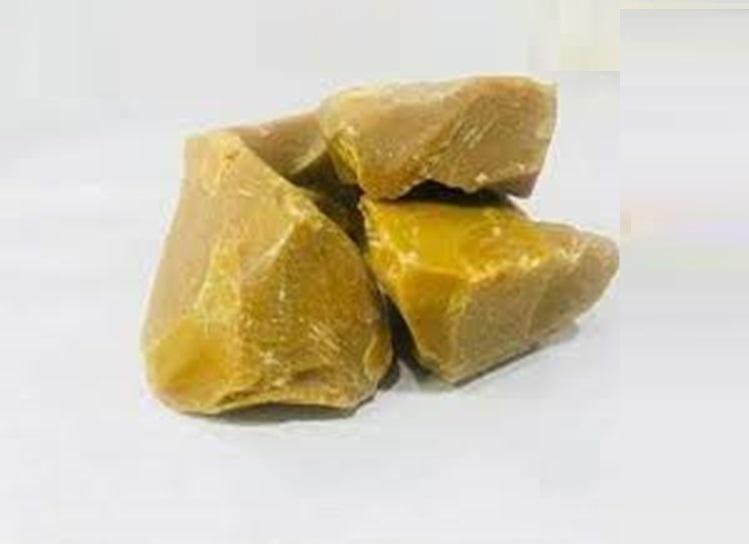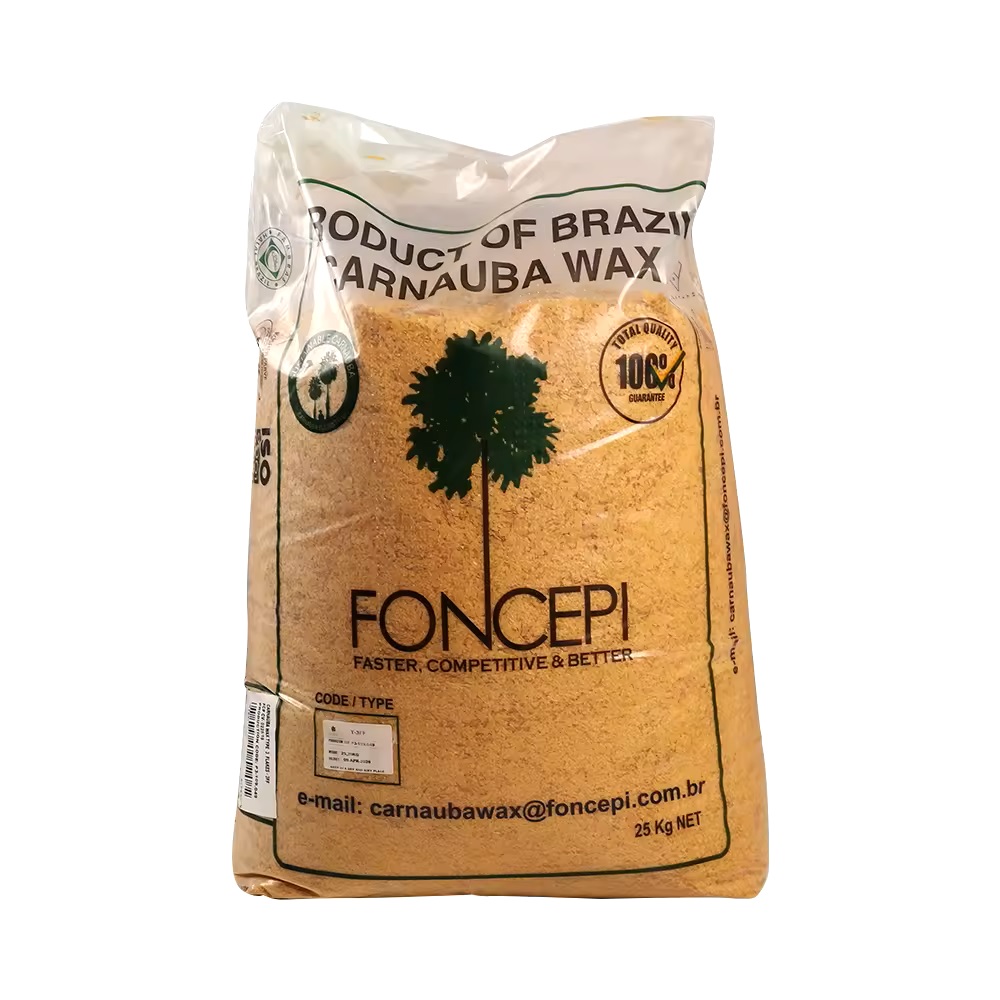We unleash your business potential by maximize the business innovation.
Send EmailE903, Carnauba Wax, Palm Wax, Ceara Wax, Copernicia Cerifera Wax, Brazil Wax, 8015-86-9
🌿 Carnauba Wax Quality Grades
Carnauba wax is classified into different grades based on purity, color, and leaf origin. These grades determine its suitability for various industrial and commercial applications.
🇧🇷 Brazilian Traditional Grades
| Grade Name | Appearance | Leaf Source | Typical Use | Key Features |
|---|---|---|---|---|
| Type 1 (Olho) | Light yellow, glossy | Upper leaves | Food, cosmetics, pharmaceuticals | Highest purity and brightness |
| Type 3 (Fatty) | Brownish, oily | Lower leaves | Industrial polishes, textiles | Medium quality, more oily texture |
| Type 4 (Sandy) | Gray-brown, dull | Bottom leaves | Automotive, furniture waxes | Hard, low gloss, lowest purity |
These grades are determined during the extraction process and are widely used in Brazilian export documentation.
🧪 Refinement-Based Grades (U.S. Classification)
| Grade | Refinement Level | Source Grade | Applications |
|---|---|---|---|
| Type 1 | Filtered, refined, bleached | Olho wax | Food-grade, cosmetics |
| Type 3 | Filtered, semi-refined | Fatty wax | Industrial and technical use |
| Type 4 | Centrifuged, unrefined | Sandy wax | Heavy-duty technical coatings |
These classifications are often used in international trade and ERP systems for quality control and compliance.
📦 Cataloging Recommendations
For your workflow:
-
Include “Grade” field in product metadata
-
Match leaf origin and refinement level in supplier documents
-
Filter by application suitability in ERP modules (e.g., food vs. industrial)
🧪 Carnauba Wax Quality Grades: T1, T3, T4
Carnauba wax is classified into three main grades—T1, T3, and T4—based on purity, color, filtration level, and intended application. These grades are internationally recognized and directly affect product performance and regulatory compliance.
🔹 T1 Grade (Type 1) – Premium Quality
-
Purity: Highest (≥98%)
-
Color: Pale yellow to light yellow
-
Processing: Extensive filtration, bleaching, and discoloration
-
Form: Brittle flakes with low odor
-
Applications:
-
Cosmetics (lipsticks, mascaras, creams)
-
Pharmaceuticals (tablet coatings)
-
Food industry (E903 additive)
-
-
Properties:
-
High gloss
-
Hypoallergenic
-
High melting point (82–86 °C)
-
-
ERP Note: Flag as “Food/Cosmetic Grade”; requires full COA and allergen declaration
🔹 T3 Grade (Type 3) – Industrial Grade
-
Purity: Medium (≈90–95%)
-
Color: Yellow to brownish-yellow
-
Processing: Moderate filtration and discoloration
-
Form: Hard flakes, slightly more aromatic
-
Applications:
-
Furniture polish
-
Leather waterproofing
-
Wood finishes
-
-
Properties:
-
Good hardness and gloss
-
Slightly more impurities
-
🔹 T4 Grade (Type 4) – Technical Grade
-
Purity: Lowest (≤90%)
-
Color: Dark brown to gray
-
Processing: Basic filtration, no bleaching
-
Form: Dense flakes, stronger odor
-
Applications:
-
Automotive waxes
-
Industrial coatings
-
Mold release agents
-
-
Properties:
-
High hardness, low gloss
-
May contain natural residues
-
-
ERP Note: Flag as “Non-Food Grade”; requires usage restriction notes
🧾 Common Trade Names & Synonyms
| Name Variant | Context / Usage |
|---|---|
| Carnauba Wax | Standard international name |
| Karnauba Mumu / Karnoba Vaks | Turkish transliterations |
| Brazil Wax / Brezilya Mumu | Geographic origin reference |
| Palm Wax / Palm Mumu | Botanical source reference |
| Ceara Wax / Ceara Mumu | Regional name (Ceará, Brazil) |
| Copernicia Cerifera Wax | Botanical name of the source palm |
| Copernicia Prunifera Wax | Alternate botanical classification |
| E903 | EU food additive code |
| Carnauba Wax Yellow | Grade-specific name (T1, premium) |
🌿 Botanical & Scientific Identifiers
-
CAS Number: 8015-86-9
-
INCI Name (Cosmetics): Copernicia Cerifera (Carnauba) Wax
-
HS Code (Customs): 1521.90.90 (varies by country)
🧪 Related Wax Types (Not identical, but often grouped)
| Related Wax | Difference from Carnauba Wax |
|---|---|
| Candelilla Wax | Softer, lower melting point |
| Montan Wax | Mineral origin, darker color |
| Beeswax | Animal origin, softer texture |
| Microcrystalline Wax | Petroleum-based, flexible |
📦 Cataloging & Workflow Integration Tips
To align with your zero-tolerance policy on sector mixing and document gaps:
-
CAS Validation: Always use CAS 8015-86-9 for all grades
-
Grade Field: Include “Grade” as a mandatory field in product metadata
-
Supplier Docs: Require grade-specific COA, MSDS, and filtration method
-
ERP Filters: Segment by grade for application-specific modules (e.g., food vs. industrial)
-
Meta Tags: Use grade and application keywords for SEO and internal search
1. Product Description:
-
Product Name: Carnauba Wax
-
Chemical Formula: C₃₀H₆₂O₂
-
CAS Number: 8015-86-9
-
Appearance: Hard yellow-brown flakes
-
Molecular Weight: Approximately 450 g/mol
-
Melting Point: 82-86°C
-
Boiling Point: Not applicable (decomposes)
-
Density: 0.97 g/cm³
-
Solubility: Insoluble in water; soluble in hot ethanol and chloroform
2. Product CAS No:
-
CAS Number: 8015-86-9
3. Physical and Chemical Properties:
-
Physical Properties:
-
Appearance: Hard yellow-brown flakes
-
Melting Point: 82-86°C
-
Density: 0.97 g/cm³
-
Solubility: Insoluble in water; soluble in hot ethanol and chloroform
-
-
Chemical Properties:
-
Chemical Formula: C₃₀H₆₂O₂
-
Reactivity: Generally chemically inert and stable under normal conditions
-
pH Stability: Stable over a wide pH range
-
4. Uses:
-
Automotive Industry: Used in car waxes and polishes to provide a glossy finish and protect the paint.
-
Food Industry: Used as a coating for candies and pills to give them a shiny appearance (E number E903).
-
Cosmetics: Used in lipsticks, eyeliners, mascaras, and other cosmetic products for its thickening and glossy properties.
-
Furniture and Floor Polishes: Provides a durable and high-gloss finish.
-
Pharmaceutical Industry: Used as a coating for tablets to make them easier to swallow.
-
Musical Instruments: Used in polishes for musical instruments to enhance their appearance and protect the surface.
5. Other Names:
-
Brazil Wax
-
Palm Wax
-
Ceara Wax
-
Copernicia Cerifera Wax
6. Common Name:
-
Carnauba Wax
🧪 Carnauba Wax vs Palm Wax – Technical & ERP Comparison
| Attribute | Carnauba Wax (CAS 8015-86-9) | Palm Wax (CAS 68440-10-6 or variants) |
|---|---|---|
| Botanical Origin | Copernicia cerifera – Brazilian palm | Elaeis guineensis – Oil palm tree |
| Physical Form | Hard yellow flakes or powder | Granules or blocks |
| Melting Point | 82–86 °C – High hardness | 58–65 °C – Softer, crystallizing texture |
| Surface Effect | High gloss, UV resistance, water repellency | Matte or crystalline finish |
| Certifications | E903 (food additive), BP/USP, FDA compliant | Technical-grade; limited food/cosmetic certification |
| Primary Applications | Food coating, cosmetics, pharmaceuticals, automotive polish | Candle making, packaging, paper coating, textile finishes |
| ERP Module Assignment | Food / Cosmetic / Pharmaceutical | Candle / Packaging / Textile |
| Alias Risk Level | High: Brazil Wax, Ceara Wax, Palm Mumu (confusing overlap) | Moderate: Palm Wax, Vegetable Wax |
| Meta Tag Strategy | “Natural hard wax from Copernicia cerifera” | “Palm-derived crystallizing wax” |
| Documentation Availability | TDS, MSDS, E903, BP/USP certificates | TDS/MSDS available; pharma-grade docs typically absent |
🔧 Recommended ERP Alias Matrix
| Product Type | Valid Aliases (EN–TR) | Module Assignment |
|---|---|---|
| Carnauba Wax | Brazil Wax, Ceara Wax, Copernicia Wax / Karnauba Mumu | Food, Cosmetic, Pharmaceutical |
| Palm Wax | Palm Wax, Vegetable Wax / Palm Mumu | Candle, Packaging, Textile |
🧪 Comprehensive Wax & Oil Types – Sectoral Suitability Table
| Product Name | CAS No | Food | Cosmetic | Candle | Packaging | Textile | Description |
|---|---|---|---|---|---|---|---|
| Carnauba Wax | 8015-86-9 | 🟩 | 🟩 | ⛔ | 🟨 | 🟩 | E903 food additive; high gloss and hardness |
| Fully Refined Paraffin Wax | 8002-74-2 | 🟨 | 🟨 | 🟩 | 🟩 | 🟩 | Low oil content; suitable for packaging and textiles |
| Coconut Wax ✅ | 8002-74-2 | 🟩 | 🟩 | 🟩 | ⛔ | ⛔ | Soft texture; ideal for scented and massage candles |
| Stearic Acid 1865 | 57-11-4 | 🟩 | 🟩 | 🟩 | 🟨 | 🟨 | Candle hardener; widely used in soap and cosmetics |
| Polyethylene Wax (PE Wax) | 9002-88-4 | ⛔ | ⛔ | 🟨 | 🟩 | 🟩 | Rheology modifier; used in PVC and plastisol systems |
| Liquid Paraffin | 8042-47-5 | 🟩 | 🟩 | ⛔ | 🟨 | 🟩 | BP/USP/IP grade; safe for pharmaceutical and cosmetic use |
| Semi Refined Paraffin Wax | 8002-74-2 | ⛔ | 🟨 | 🟩 | 🟩 | 🟩 | Technical grade; suitable for industrial applications |
| Palm Wax ✅ | 68440-10-6 | ⛔ | 🟨 | 🟩 | 🟩 | 🟨 | Crystallizing texture; widely used in candles and packaging |
| Nature Soy Wax ✅ | 8016-70-4 | 🟩 | 🟩 | 🟩 | ⛔ | ⛔ | Clean-burning; ideal for natural and massage candles |
| Rice Bran Wax | 8016-60-2 | 🟨 | 🟩 | 🟩 | 🟨 | 🟨 | Stick stabilizer; used in balms and lip care products |
| Natural Bee Wax Pellet | 8012-89-3 | 🟩 | 🟩 | 🟩 | 🟨 | 🟨 | E901 food additive; emulsifying and binding agent |
| Microcrystalline Wax | 63231-60-7 | 🟨 | 🟩 | 🟩 | 🟩 | 🟨 | High viscosity; used as barrier and carrier wax |
| Slack Wax | 64742-61-6 | ⛔ | ⛔ | 🟩 | 🟩 | 🟩 | Refinery by-product; low purity, technical grade only |
| Candelilla Wax | 8006-44-8 | 🟩 | 🟩 | 🟨 | 🟨 | 🟨 | Vegan alternative; common in lipsticks and balms |
🟩 = Suitable | 🟨 = Limited Use | ⛔ = Not Suitable
|
Name |
Carnauba wax |
|
Synonyms |
carnuba |
|
CAS |
8015-86-9 |
|
EINECS |
232-399-4 |
Physico-chemical Properties
|
Density |
0.990-0.999 |
|
Melting Point |
81-86 °C |
|
Water Solubility |
Soluble in diethyl ether, alkali, chloroform. Slightly soluble in boiling ethanol. Insoluble in water. |
|
Solubility |
Practically insoluble in water, soluble on heating in ethyl acetate and in xylene, practically insoluble in alcohol. |
|
Appearance |
Bright yellow solid |
|
Specific Gravity |
0.990-0.999 |
|
Color |
Yellow |
|
Merck |
14,1846 |
|
Storage Condition |
-20°C Freezer |
|
Stability |
Stable. Incompatible with strong oxidizing agents. |
|
Sensitive |
Easily absorbing moisture |
|
Refractive Index |
1.4500 |
|
MDL |
MFCD00130724 |
|
Physical and Chemical Properties |
Brown to light yellow brittle wax, with resin-like cross-section, slightly odorous. The relative density is 0.997, the melting point is 82~85 ℃, and the iodine value is 13.5. It is soluble in chloroform, ether lye and fat above 40 ℃, slightly soluble in hot ethanol, insoluble in water. Adl 0~7 mg/kg(FAO/WHO,1994). |
|
Use |
Instead of beeswax. Insulation. Water repellent. Shoe polish. Fake paint. Source carnauba wax is a natural plant wax extracted from the leaves of palm trees that grow in northeastern Brazil, South America. It plays an important role in preventing the evaporation of water in dry areas. In these areas where industries are poor, carnauba wax plays a very important role in revitalizing the regional economy. The export of carnauba wax is attracting increasing attention as a bridge between agriculture and industry. Characteristics (1) Glossy is a major function of carnauba wax. It has been widely used in coating films in the fields of sugar-coated chocolate, granular chewing gum, nutritional food tablets, food and medicine, and has also been widely used in automobile wax, floor wax, leather polish, etc. Brazil |
Risk and Safety
|
Safety Description |
24/25 - Avoid contact with skin and eyes. |
|
WGK Germany |
3 |
|
TSCA |
Yes |
|
HS Code |
15211000 |
Standard
This line extracts the purified wax from the leaves of CopermWa cerz'/mz Mart.
Trait
-
This product is light yellow or yellow powder, flakes or lumps.
-
This product is soluble in hot xylene, soluble in hot ethyl acetate, almost insoluble in water or ethanol.melting point
The melting point of this product (General rule 0612 second method) should be 80 ~ 86C.
acid value
Take about 5g of this product, accurately weigh it, put it in a 250ml Erlenmeyer flask, add 100ml of xylene, heat it to completely dissolve, add 50ml of ethanol and bromothymol blue indicator solution 2. 5ml, heated to clarify, while hot with ethanol potassium hydroxide titration solution (O .lm o l/L) drop to the solution is green, and the titration result is corrected with blank test. The acid value (General rule 0713) should be 2 to 7.
saponification value
Take about 3g of this product, weigh it accurately, put it in a 500ml Erlenmeyer flask, add 50ml of isopropanol-toluene (5: 4) mixture, and add 0 .5M o l/L potassium hydroxide ethanol solution 15ml, heated reflux for 3 hours, add phenolphthalein indicator liquid lm l, while hot with hydrochloric acid titration solution (0 .5M o l/L) titration, until the solution is pink and fades, heat to boiling, if the solution is pink again, then titrate to pink and fades, the results of the titration were corrected by a blank test. Saponification value (General rule 0713) should be 78~95.
iodine value
Take about 1.8g of this product, weigh it accurately, put it in a 500ml dry iodine bottle, add 30ml of chloroform, heat and dissolve it in a water bath at 80°C IX, determination according to law (General rule 0713), iodine value should be 5~14.
Introduction
There's a pleasant smell. Soluble in ether, boiling ethanol and alkali, slightly soluble in 25 ℃ grease solvent, insoluble in water. Acid number 2-9. Iodine value 13.5. Saponification value 78-89.
Differential diagnosis
Take this product about O . l g, 5ml of trimethyl methane was added and dissolved by heating, which was used as the test solution (taking advantage of the hot spot sample, about 10 mg of menthol, 10 mg of thymol and 10 ml of Menthyl acetate were separately taken, and placed in the same 20ml measuring flask, add toluene to dilute to the scale, shake, as a control solution. According to the thin layer chromatography (General 0502) test, draw the Test Solution 6 ^ 1 and the reference solution 2 ^ 1, and point on the same silica gel G thin layer plate respectively, with ethyl acetate • ■ three gas methane (2 > 98) as the developing solvent, expand, take out, dry, spray with a new 20% phosphomolybdic acid ethanol solution at 105t: heat for 10-15 minutes until the spots are clear. The control solution showed spots from low to high followed by dark blue menthol, red thymol and dark blue Menthyl acetate. The test solution should show a large spot (thirty alkanes) between the corresponding positions of menthol and luteolin, and multiple tiny spots are visible below it, A plurality of blue spots should be displayed between the corresponding positions of thymol and Menthyl acetate, and other spots should be displayed above the above spots, and the spot with the largest specific shift value (elder brother) should be clear, the origin should appear blue.
Clarity and color of solution
Take this product O .lg, add three gas methane 1 0 m l, heat to dissolve, check according to law (General rule 0901 and general rule 0902), the solution should be clear and colorless; If color, compared with the same volume of control solution (take 1.0 of potassium dichromate solution for color comparison, add 15ml of water, shake, then get), no deeper.
Ignition residue
The l .O g of this product is taken for determination according to law (General rule 0841), and the residue left shall not exceed 0.25%.
Heavy metals
The residue left under the ignition residue item shall not contain more than 20 parts per million (ppm) of heavy metals after inspection by law (General Rule 0 8 2 1).
Category: Pharmaceutical excipients, coating materials and release blockers.
Storage : Sealed storage.
Reference Information
|
Overview |
The leaves and leaf buds of Brazilian palm are extracted and refined, hard and brittle, insoluble in water, it is a hard, high-melting, glossy wax. Its main component is palmitic acid beeswax Ester, fatty acid ester, wax acid and hydrocarbon component, which is composed of most of the twenty-six acid ester and a small amount of Diester and hydroxy fatty acid. |
|
physical and chemical properties |
density: 0.990-0.999g/cm3 |
|
Main purpose |
Brazilian palm can be used as a film covering agent for candy, preserved fruit coating agent and glazing agent. Specific details are as follows: |
|
Synthesis process |
Brazilian palm is obtained by manual extraction through a complex process, and there is no disclosed preparation process at present. |
|
Determination of content |
experiments by Zhicong de et al showed that the standard sample solution was directly derivatized with trimethylsilane (BSTFA), after the sample was extracted by ultrasonic heating, it was derivatized with BSTFA, and directly detected by hydrogen flame ionization detector (FID) to obtain good detection results. The specific detection parameters are set as follows: column RTX65-TG:30 m x 0.32mm (I. d.),0.25 m. Column temperature: based on 200 ℃, rise to 370 0C at 20 0C /min, keep for 20 min, run time 37 min; Inlet temperature 320 ℃; Detector temperature 370 ℃; the flow rate of hydrogen was 40 mu Min, the flow rate of air was 400 mu Min, and the injection volume was 1 μL. In order to achieve better separation effect on high boiling point substances, the program pressure-up mode is adopted at the same time: the column flow rate is 1.0 mL/min, and the column flow rate is maintained for 17 min, the column flow rate was increased to 100 mL/min at 2.0 mL/min 2 for 4 min, and the column flow rate was further increased to 100 mL/min at 3.0 mL/min 2. |
|
Ignition residue detection |
take 1.0g of this product, according to the determination of Chinese Pharmacopoeia, the remaining residue shall not exceed 0.25%. |
|
Heavy metal detection |
the residue left under the item of ignition residue shall not contain more than 20% of heavy metals as determined by Chinese Pharmacopoeia. |
|
Toxicology data |
1. LD50 mice were orally administrated with 15g/kg (Guangdong Provincial Institute of Food Hygiene Supervision and Inspection). |
|
Category storage |
[category] pharmaceutical excipients. |
|
References |
[1] R.C. Lo, P.J. Scherski, P.J. Weller, Junmin Zheng. Handbook of pharmaceutical excipients original Fourth Edition. Beijing: Chemical Industry Press, 2004 |
|
Toxicity |
GRAS(FDA,§ 184.1978,2000). ADI 0~7(FAO/WHO,2001). |
|
Usage limit |
GB 276-200l(g/kg): 0.18 chocolate beans; 0.6 candy; GMP gum base. |
|
Use |
as a coating agent, can be used for candy, preserved fruit coating agent and glazing agent. |
|
Production method |
the leaves and leaf buds (present on the surface) from coperncia cereriferra extracted and refined. |
